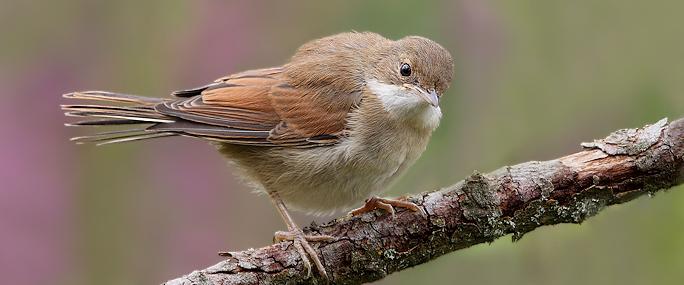The Whitethroat is a medium-sized, long-tailed warbler of grassland, scrub and hedgerows. It is a summer visitor and passage migrant, breeding in many areas but avoiding urban and mountainous places. Males Whitethroats build nests out of twigs and roots and the females then decide which to take. Whitethroats winter in Africa, leaving our shores in early October and heading as far south as South Africa.
During the 1960s, Whitethroats sustained heavy losses as their wintering grounds in sub-Saharan Africa suffered major drought - breeding Whitethroats suffered a 90% drop in the UK. Numbers have not fully recovered yet, but are on the up. The Wildlife Trusts manage many grassland and woodland nature reserves sympathetically for Whitethroats and other bird species. You can help by supporting your local Trust and becoming a member; you'll find out about exciting wildlife happenings, events on your doorstep and volunteering opportunities, and be helping local wildlife along the way.
